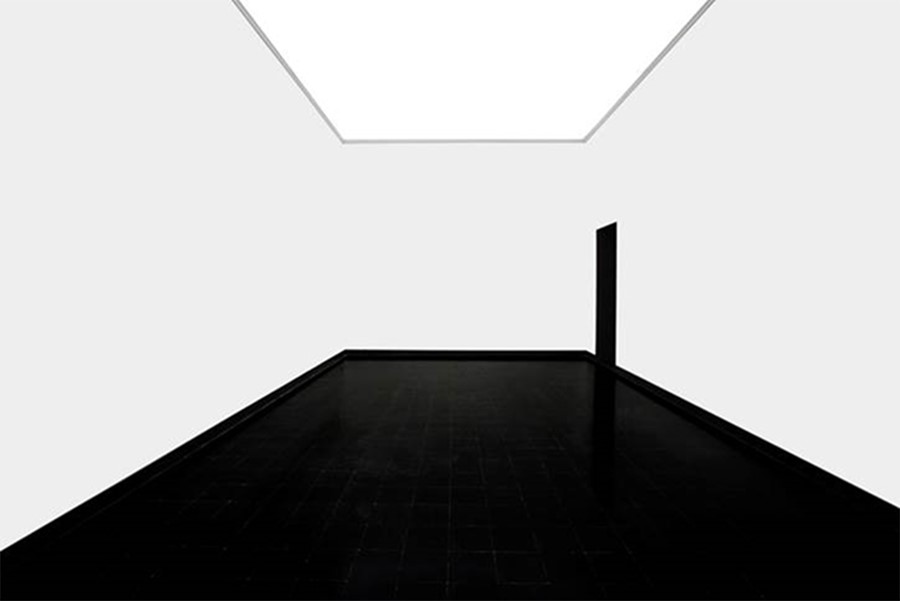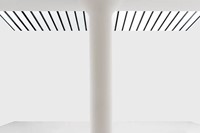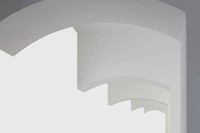Artist Arslan Sükan shares the ideas behind his striking, monochrome landscapes
Having originally trained as an architect, Arslan Sükan's focus is now to transform gallery spaces with his artworks. Appropriating found images from the internet of "installation shots" (white cube spaces within museums, galleries and art institutions around the world – there are plenty), he removes the original artworks and manipulates the image, adding pillars, or ceilings or floors. A digital architect, if you like. Deconstruction, intervention and reconstruction of the iconic white cube. The resulting photographic works are startling; graphic and minimalist.
Born in Turkey in 1973, Sükan worked as architect in New York until 2008 and as an artist has exhibited his works worldwide. "I always had this strong intuition that I wanted to make something that has no specific boundaries," he explains. Here, the artist discusses the ideas behind his second solo show and his architectural background.
What are the key ideas about your upcoming exhibition? I try to explore the conventions of a ‘white cube’ gallery space as both an architectural context and as a content subject in and of itself. It is an attempt to visualise the invisible things in social and phenomenological terms. This act is like installing my own monochromatic paintings inside these gallery spaces. When a viewer looks at these works, at first sight, they may think that they are just looking at empty rooms. But upon closer inspection, they will realise that some parts of the image have no shadow, no tonal change or depth. This is how I try to show the invisible/visible paintings inside an image of a white cube space. This layered approach embraces the disputed characteristics of the white cube as a sacred space undisturbed by time; at the same time it expands the potential for artistic intervention in a gallery by transforming the space itself on a plane surface. As a result it brings complicity between opposites and creates dualism between recognition and non-recognition, visibility and invisibility, abstraction and representation. What I aim to achieve is an entirely new space, an architecture of past and future, with a continuously shifting viewpoint.
"This act is like installing my own monochromatic paintings inside these gallery spaces"
What are the reasons behind your choice of medium? Photographs provide evidence of art work and can usually be better utilised to this end than the art work itself. This ‘second hand’ presentation has become the primary information source about many art works. This ‘photographic reality’ of an art work becomes an extension of the reality. As another key point of this exhibition, I have transformed this ‘second hand’ presentation to the original work.
You work with a monochrome colour palette - can you explain why? They are not originally monochrome colours but once I remove the artworks inside these spaces, they look like monochrome colour palettes.
How would you say your Turkish background has inspired you? It always adds another perspective to look at things from east to west as well as from west to east. When you look at my latest works, they don’t seem to be obviously Turkish but as I stated above, looking at the notions of the Western world from the Eastern world, it brings different meanings and possibilities.
Where do you enjoy working most - Istanbul or New York? What do you get from each city? Each city has its own unique offerings. Changing cities definitely helps to understand things from different perspectives. It helps you to see both sides of the coin. I cannot prefer one to the other, they both have a different impact and value in my life. As if one of them is my brother and the other one is my sister.
How does your architectural background inform your work? Spaces change human behaviour. I’m interested in man-made structures because they have social and political layers inside. Rather than directly analysing the patterns of human life, I try to explore the situations from the other way around. My latest works are photographic works which are two dimensional. You cannot experience architecture in 2 dimensional spaces, however in architecture, everything starts with a 2 dimensional sketch. In another words, I’m more interested in the intellectual dimension of architecture. I think ideas and concepts, even if they are on a paper space, can have more impact and saying on life than physical experiences.
What motivates you to keep making art? I always had this strong intuition that I wanted to make something that has no specific boundaries. I have worked in many different jobs and once I had that kind of experience, it was obvious for me
Arslan Sükan's INtheVISIBLE runs at Galerist until October 12.



